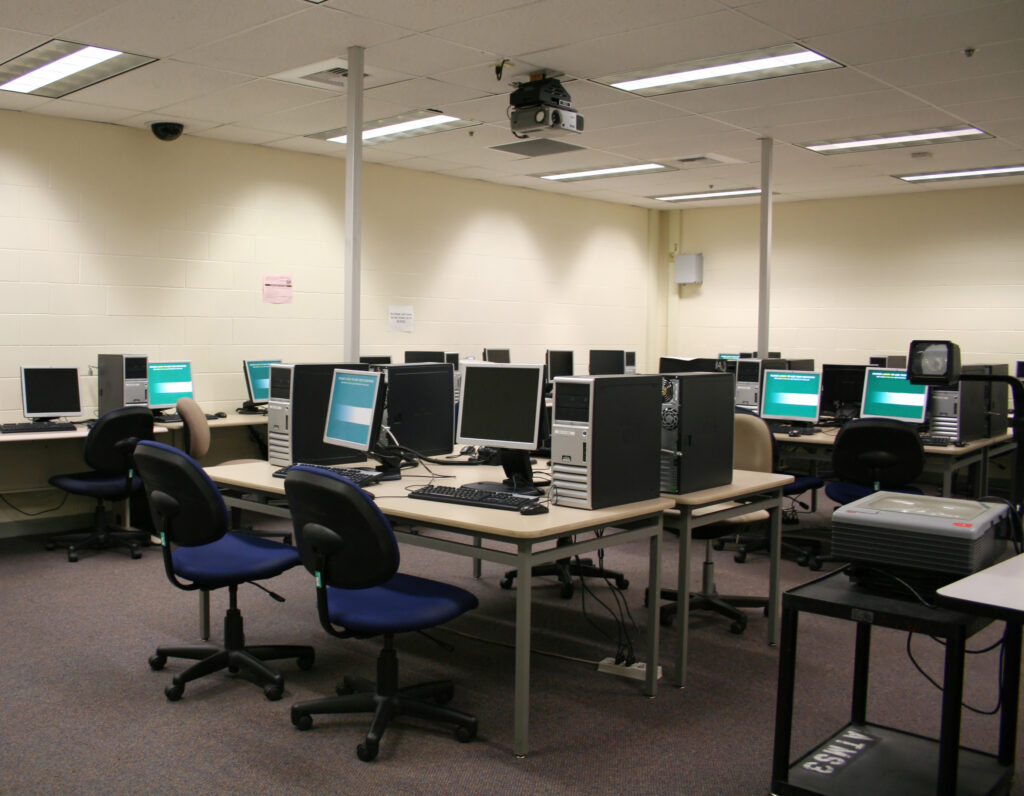Co-authored by Sam Hafferty, Mihir Kshirsagar, Eszter Hargittai, and Tithi Chattopadhyay
Our survey of state digital equity plans makes abundantly clear that states view digital skills as important and necessary to modern life. With increasing digital workplace demands, shifts towards K-12 online learning environments, and the adoption of telehealth technologies in medical service administration, digital literacy has become essential for individuals to work, learn, access benefits, and communicate. But how precisely are the states defining the literacy goals they are trying to achieve with these plans? In this post we take a closer look at the definitions of digital literacy to understand whether states have set measurable and effective targets to evaluate their progress.
A National Reference Point
The state digital equity plans were produced with the support of funding from the National Telecommunications and Information Administration (NTIA) that is outlined in the Notice of Funding Opportunity for the Digital Equity Planning. The NTIA’s definition of digital literacy borrows from the Infrastructure Investment and Jobs Act (Jobs Act): “the skills associated with using technology to enable users to find, evaluate, organize, create, and communicate information.” This definition offers a foundation that states can build from and decide which specific skills are required for digital literacy based on respective population, geographic, cultural, and other contextual factors.
How States Define Digital Literacy
Our analysis found that of the 50 state plans, only thirteen states explicitly define digital literacy, though the majority of these definitions use the exact or very similar wording to that of the Jobs Act. Definitions of digital literacy are present in the state equity plans for Arizona, Colorado, Maine, Maryland, New Jersey, North Carolina, Oregon, Pennsylvania, Rhode Island, South Carolina, South Dakota, Vermont, and Washington.
Two states, Pennsylvania and Rhode Island, go further and identify specific digital skills they plan to prioritize. The Pennsylvania digital equity plan states “[s]kills range from basic knowledge to operate a computer, create an email account, and connect a printer; to more advanced assistance navigating online portals and learning common software that contribute to economic opportunities.” Rhode Island’s plan outlines digital skills as those needed “to access digital services from basic email and web browsing to videoconferencing and telehealth.”
A handful of these states offered slight additions or departures from the Jobs Act definition. For example, Arizona acknowledges “both cognitive and technical skills,” pointing to the importance of how one understands and engages with online content beyond the knowledge of how to operate a device. Maryland defines digital literacy as “the needed skills to navigate the digital world with confidence and to feel safe and protected on the internet,” acknowledging the impact of attitude and confidence in achieving meaningful adoption of digital skills.
Implied Priorities
Additionally, many states offer implicit insight into their skill priorities through their outlining of goals, priorities and anticipated challenges in their digital equity plans. West Virginia, for example, outlines the need for “training in cybersecurity, privacy, telehealth, and more” and Hawaii asserts that usable access to public services and telehealth resources, particularly for rural residents, is a barrier in need of strong attention in their work. We also see in several plans, including Mississippi, Arizona, and California, a nod to the importance of tech literacy for workforce training and development, either for Broadband Equity, Access, and Deployment (BEAD) program-created jobs or tech jobs otherwise.

Approaches to Defining Digital Literacy
Libraries have been at the forefront of literacy initiatives and have developed definitions of digital literacy that could be instructive for the states. For instance, the American Library Association explains that “[l]ike information literacy, digital literacy requires skills in locating and using information and in critical thinking. Beyond that, however, digital literacy involves knowing digital tools and using them in communicative, collaborative ways through social engagement.” The clarity around purpose and context of digital literacy in real-world situations offers insight into the challenges and opportunities ahead of digital literacy training and curriculum development.
Similarly, the Carnegie Library of Pittsburgh outlines ten core skills on its website for achieving digital literacy that it aims to help every adult patron learn explicitly, including skills like “[u]se job search portals”, “send and receive messages on email” and “write a letter on Word” among seven other actionable skills that programming can offer. Northstar, a nonprofit program of Literacy Minnesota, offers digital literacy training courses to libraries and educational institutions across the US, providing a list of standards that provide a basic foundation to achieve digital literacy including phone keyboard basics & logging in, supporting K-12 distance learning, and cybersecurity basics.
Conclusion
While the specific digital skills of relevance to each state will vary based on population needs and context, identifying the basic and advanced skills and developing measurable outcomes will be of key importance to a state’s digital literacy programming. Our survey of the state plans demonstrates that there is little clarity as to which digital skills states aim to prioritize in their equity plans. Whether pulling from past public sector work or drawing on external resources, a more detailed approach to defining digital literacy and skills can offer greater focus and flexibility in the implementation of digital literacy programming across the country. In the next phase of our work, we will be looking into the challenges and goals across these digital equity plans to understand the focus of each of these plans better.
Are you involved with public digital literacy planning or programming in your state? Please feel free to reach out via email at digitalequity@princeton.edu to discuss your experiences or ideas.
About the team:
Tithi Chattopadhyay is the executive director of the Center for Information Technology Policy at Princeton University.
Sam Hafferty is an Emerging Scholar research fellow at the Center for Information Technology Policy.
Eszter Hargittai is Professor and holds the Chair of Internet Use and Society at the Department of Communication and Media Research of the University of Zurich.
Mihir Kshirsagar is Clinic Lead and Steering Committee Member at the Center for Information Technology Policy.


Leave a Reply